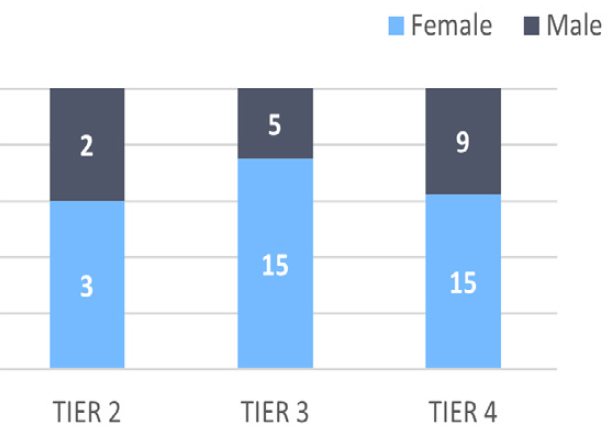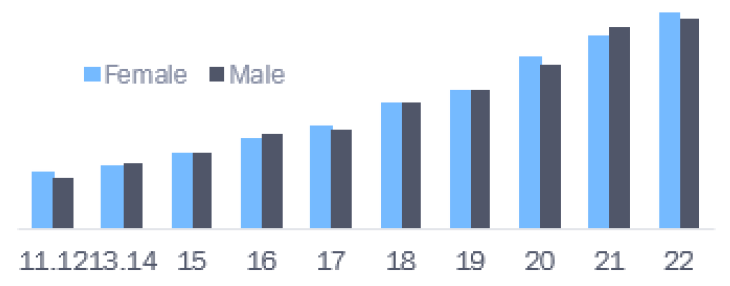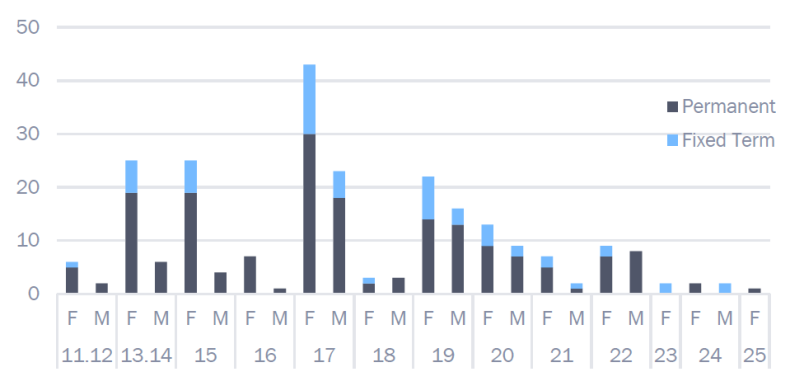Formats
Organisation overview, context and commitment - Tā te whakahaere matawhānui, manawanui hoki #
The Department of the Prime Minister and Cabinet (DPMC) advances an ambitious, resilient and well-governed Aotearoa New Zealand. To achieve this we require an influential, agile, high-performing organisation in which our people feel empowered, valued and engaged.
We want our workforce (ohu mahi) to reflect the diversity of Aotearoa New Zealand. Every person needs to be curious, resilient, self-aware and culturally competent, so we can engage redspectfully with our diverse local and global communities of interest. The way in which we work needs to value the diversity of people, thought, approach and experience. Being inclusive in how we engage with one another means our people feel they belong both to our community and many others, they can be themselves at work, speak up safely and contribute.
Our aspiration for our staff (kaimahi) is that they:
- hear conversations that embrace and value difference, and focus on how we can make equitable change and positive difference for all people in New Zealand
- feel a strengthened sense of inclusion, where we can all bring our best and true self to work
- experience environments and leaders fostering and modelling a more diverse and inclusive culture with words, actions, systems and processes
- understand a variety of world views and how that impacts our mahi, and
- see a workforce that is more diverse, and more reflective of the population.
All business units have shared internal priorities that focus on:
- building our te ao Māori capability, and
- foster a positive and inclusive work environment (wāhi mahi).
We actively support our employee-led networks and provide access to wider public service networks.
We have developed our approach to our diversity and inclusion goals over the past three years, with our employee-led networks, staff workshops, all-staff and people leaders' hui, and a meeting with the Executive Leadership Team.
Our intentions to deliver on Diversity and Inclusion, Kia Toipoto and Papa Pounamu commitments are included in this plan.
Our people #
We're a small to medium-sized organisation of 242 people supporting the Prime Minister, the Governor-General and Cabinet as well as the work of our other portfolio ministers.
Gender and leadership
Women make up the majority of our workforce and occupy 67% of all people leader roles (33 of 49) and 72% of Tiers 2 and 3 roles. DPMC's Executive Leadership Team (ELT) is comprised of seven members, including four women and three men[1].
Table 1: Gender by percentage[2]
| Gender | All DPMC % |
|---|---|
| Women | 67.4 |
| Male | 31.0 |
Table 2: Gender balanced leadership

Notes
Pay Gaps #
Our Gender Pay Gap (GPG) has improved #
Our data shows our GPG improved between June 2022 and June 2024. The steady fluctuation of staff, with 86 employees onboarded and 89 offboarded in the 12 months to 30 June 2024, contributed to our GPG movement.
Our gender pay gap improved by 4.1 percentage points over the final quarter of reporting to 30 June 2024. This was due to a number of senior male staff exiting DPMC and a number of senior female staff joining. GPG for permanent staff improved from 16% to 9.1% in the last year.
Table 3: Gender Pay Gap June 2024
Table 4: Gender Pay Gap June 2022 to June 2024

Terms used in this plan #
Horizontal equity - this is how we compare all people in the same pay band by gender or by ethnicity. For example, if there is no significant difference between the average salary of men and women within a band, we have achieved horizontal equity for that band. If we achieved horizontal equity across all pay bands, then the organisation as a whole has achieved horizontal equity. Typically, this is more immediately controllable by an organisation as equity adjustments can be applied to salaries as part of remuneration rounds.
Vertical equity - this is how we compare all people across all pay bands by gender or by ethnicity. For example, if there is no significant difference between the average salary of men and women across all salaries then the organisation as a whole has achieved vertical equity. Typically, this is more difficult to make changes in where there is a wide range of roles within an organisation, including of lower-paid roles that typically recruit women into. The lower level of pay for certain roles within an organisation to some extent reflects wider societal attitudes and expectations as to appropriate levels of remuneration for such work.
Mean, or 'average' salary - this is the method of comparison used by the Public Service Commission. It is a simple arithmetic value of the total salaries paid to men, divided by the number of men, compared with the total salaries paid to women, divided by the number of women.
Median salary - this is the method of comparison used by Statistics New Zealand. It involves listing all salaries for men from top to bottom and picking the middle number, and comparing this with the middle number of all salaries for all women listed from top to bottom.
This matters to us: Our mean gender pay gap recently reduced below ten percent for the first time since Kia Toipoto, the Public Service pay gaps action plan, launched in November 2021. Our goal for this year is to ensure our mean gender pay gap remains below ten percent.
Variation in our size and composition affects pay equity #
We experience a variation in the size and make-up of our workforce with new time-limited responsibilities arriving such as hosting the initial COVID-19 response function, and the functional Chief Executive, Cyclone Recovery, and others exiting such as the COVID-19 Response Group, Health Transition Unit, and the Christchurch Call. This means we typically have a higher proportion fixed-term staff than in other public service agencies. As of 30 June 2024, a quarter of our people are on fixed-term contracts.
Table 5: Employees by employment type
| Employment Type | Employees | Percentage |
|---|---|---|
| Permanent | 181 | 74.8 |
| Fixed-term | 61 | 25.2 |
We have analysed our gender pay gap by employment type and there is a significant difference of ten percentage points between the GPG for our permanent staff and that for fixed-term staff. This is a consequence of two ELT members currently employed on fixed terms. Removing ELT from the data in Table 6 below reduces the fixed-term GPG to 5.2 percent.
Table 6: Gender Pay Gap by employee type June 2024
| Employee Type | Mean Total Remuneration | ||
|---|---|---|---|
| Female $ | Male $ | % Gap | |
| Permanent | 129,998 | 142,985 | 9.1 |
| Fixed Term | 148,224 | 183,134 | 19.1 |
| Total | 135,030 | 149,944 | 9.9 |
Our horizontal equity looks good but we face a vertical equity challenge #
When we compare the salaries of women and men in the same grade, we do not see a pay gap issue. In all grades, the ‘horizontal' GPG for permanent staff, is either positive or small (below 5.62% with differences explainable). This is shown below:
Table 7: Mean total remuneration by pay grade and gender (permanent staff)

The 'vertical' challenge for DPMC is that we have more women in grades 17 and below. We think that's a positive sign for policy and advisory level grades that have a clear career pathway (15-17) as our promotion process applies.
Table 8: Employees by grade and gender and type June 2024

This matters to us: An area of focus is to review our recruitment processes to check our practices for biases.
We have more work to do on diversity #
Our people are mostly European/Pākehā. Our small size means it is difficult to obtain datasets of sufficient size to conduct analysis by ethnicity. Nine out of ten staff have identified the ethnicities with which they identify and we regularly invite our people to update their ethnicity information. People may identify with multiple ethnicities, so the percentages shown below can add up to more than 100 percent.
The proportion of our staff identifying with ethnicities other than European/Pākehā is less than their representation in the workforce as a whole (table 9).
Table 9: Ethnicities disclosed and total disclosure
| Ethnicity | All DPMC % |
|---|---|
| Disclosure rate | 90.9 |
| Ethnicities disclosed | |
| European | 85.9 |
| Māori | 7.7 |
| Asian | 8.2 |
| Pacific | 3.2 |
| Middle Eastern/Latin American/African | 1.4 |
| Other | 1.4 |
Attracting appropriate candidates and growing the skillsets internally are key to making this shift. There is slow improvement with the number of staff identifying with a non-dominant ethnicity. We use more channels and tools to support more diverse appointment processes and outcomes. Attraction of ethnically diverse applicants has been slightly more successful, although our data shows that this does not always flow through to hire.
And reducing our Ethnic Pay Gap #
Non-dominant ethnic groups have a low representation in DPMC with average salaries for some ethnic groups being less than others. The numbers are too small to create robust measures of ethnic pay gaps for each group.
We have instead calculated a pay gap between all Māori, Pacific, Asian and Middle Eastern/Latin American/African (MELAA) employees and European/Pākehā employees. This sits at 16%. This is largely driven by grade distribution (a ‘vertical' issue), with only a small number of our ethnic employees being in higher grades.
Setting a target for closing our ethnic pay gap is challenging due to the very small numbers involved meaning a shift in just one or two employees can have a significant positive or negative effect. Our approach is to focus on increasing the proportion of people in our grades 15-17, where our promotion process applies. This will assist in increasing the pipeline for future leadership roles which will have the most impact on vertical equity.
Why diversity, equity, and inclusion matters #
Diversity, equity, and inclusion (DEI) is about reflecting and valuing the communities that DPMC engages with, to advance an ambitious, resilient and well-governed Aotearoa New Zealand.
When we attract, retain, recognise, value, and develop the skills and experiences of people across all dimensions of diversity (e.g. gender, ethnicity, disability, faith, rainbow, neurodiversity, age), this enhances our policies, engagement, leadership, and workplace.
This matters to us: Improving ethnic representation in our workforce and in leadership has been a focus in recent years and over the next five years we will aim to improve our Māori staff representation to at least 12.8%, the level of the Māori population in Wellington where we are based (Census 2021) - a rate of 1 percentage point per annum. There are continuing questions as to whether we are attracting a wider diversity of applicants or whether there are biases in the recruitment processes. Understanding this is an area of focus. Improving our ethnicity disclosure rate to 95% will be a target. We will explore the ethnic diversity in our grades 15-17 and establish targets for improving this.
Employee engagement participation is high #
Our annual Kōrero Mai employee results conducted in March 2024 recorded 83% participation by our people, including secondees from other agencies working with us. Of the 233 respondents:
- 18 people identified as being disabled
- 23 people identified as LGBTTQIA+
- 13 people identified as other than NZ European/Pākehā.
Aside from gender, the sample sizes are not large enough to draw conclusions around the experience of staff in these groups.
Overall experiences of women and men appear similar. However, men report less agreement with remuneration being appropriate to the market and are less confident than women that people leaders will implement our purpose, strategic objectives and values successfully.
And our employee-led networks have grown #
We have six employee-led networks, supported by our Culture and Engagement network.
Women's Network to support, connect and empower women across the Department.
Interfaith Network to create safe and inclusive spaces for staff from a range of diverse faith communities to bring their whole selves to work and help build understanding about faith communities and practices.
Parents' Network to support parents to connect, support each other, and to advocate to be the best parent-friendly workplace we can be.
Rainbow Network focussed on creating a safe, inclusive and supportive space for staff who identify as part of the Rainbow community and our allies.
New Professionals' Network to support and connect professionals across the Department where people can engage with people on similar journeys and develop and grow together.
Tai Ora Climate Change and Sustainability Network to support our emissions-reduction and sustainability journey, in strategy and practice.
In addition, we have a Waiata group which meets weekly, and informal social networks.
We promote wider public service networks which our people can attend, particularly in areas where we do not have sufficient staff to establish or maintain our own.
This matters to us: Fostering an inclusive culture enables our people to feel valued, empowered and engaged so that DPMC can achieve its goal of being an influential, agile and high-performing organisation.
Progress to date and future plans - Pae tata, pae tawhiti #
| Action area | Progress to date | Planned priority actions 2025 | Success indicators |
|---|---|---|---|
| Ensure our mean gender pay gap remains below ten percent. | In recent years, we've been working to ensure that all our core HR processes (e.g. recruitment, development, promotion, remuneration) support equal opportunity for women and men and do not include any biases. We have also been working on building an inclusive culture. For example:
|
Launch learning journey overview to make career progression transparent for our aspiring and new leaders. Continue to include a specific focus on gender inequities in our annual remuneration round and at recruitment. Reinstate our talent management process to ensure that our talent is equitably identified and development opportunities linked to this. Track mean gender pay gap quarterly (all employees). Continue to run a transparent promotion process annually. |
40:40:20 leadership balance Our gender pay gap remains below ten percent Our horizontal gender pay gap (by grade/same and similar roles) for our permanent employees will remain low and any gaps are explainable. |
| Review our recruitment processes, to check our practices for biases. | Human Resources policies are in an ongoing review cycle and include opportunities for staff to comment. Our policies and processes align with the Public Service Commission guidance. 90-day survey. |
Review our recruitment practices and implement changes to ensure we are attracting and enabling diversity and demonstrating inclusive behaviours, for example: vacancy pages, interview practices, targeted attraction techniques. | No appointment reviews are upheld on the basis of bias in the appointment process. |
| Reduce the Ethnic Pay Gap between European/Pākehā and ‘all other' ethnic groups. | Now that we have ethnicity data for 90% of staff, we've been able to develop an ethnic pay gap between European/Pākehā staff and all other ethnicities. | We propose to review the ethnicity data for our Grades 15-17, and to develop a target to improve ethnic representation. Over time, this will improve our ethnic leadership profile. We will take care to ensure this is not at the expense of our intention to maintain an increasing number of women within these grades. Look at ethnic inequities in our annual remuneration round and at recruitment. |
Increased representation of non-dominant ethnic groups in grades 15-17. |
| Improving our ethnicity disclosure rate to 95%. | Our focus on encouraging staff to include their ethnicity in the data we collect means that we now have data for 90% of staff. | Continue to promote benefit of providing demographic data quarterly. Track disclosure rate quarterly. |
Ethnicity disclosure rate improves. |
Understand and address the question of whether we are attracting a wider diversity of applicants or whether there are biases in the recruitment processes.
|
Bias training is offered to all staff and required for people on recruitment panels. Cultural competence (te ao Māori, and diversity and inclusion) is a core, ongoing part of our workforce development. |
Policy and guidelines for recruitment are refreshed to ensure we attract a diverse range of applicants. We will explore factors that influence retention and career development to maintain diversity. Job recruitment advertisements clearly explain the flexible working by default policy principles. Encourage all people leaders to complete unconscious bias training. Track and report on recruitment outcomes based on gender and ethnicity (where sufficient data is available). |
We understand whether there is bias in our recruitment process and have plans to address and have effective retention and development practices. |
| Improve our Māori staff representation to at least 12.8%, the level of the Māori population in Wellington where we are based (Census 2021) over five years. | Implementing, monitoring and reporting on our action plans; diversity and inclusion, Whāinga Amorangi, te reo Māori. | Implement the Māori recruitment process being developed by Public Service Commission. Track Māori recruitment data quarterly, having calculated how many positions 1 percentage point per annum equates to, and having regard to our intention to increase the representation of non-dominant ethnicities in grades 15-17. |
More Māori apply for and are appointed to roles at the rate of one percentage point per annum. |
| Foster an inclusive culture. | Inclusive language guide. Mana Āki cultural competency programme. Te Rito te ao Māori capability programme. |
Implement pulse surveys. Implement an ‘Acceptable behaviours & positive mindsets' programme. Relaunch and promote Mana Āki refresh programme. Relaunch and promote Te Rito programme. |
People score improves. Staff sentiment increases for the question: DPMC is a great place to work. Increased percentage of staff who report ‘never' to the question: How often do you feel unjustly criticised, bullied or shown up in front of others by your colleagues or your manager/leader? |
